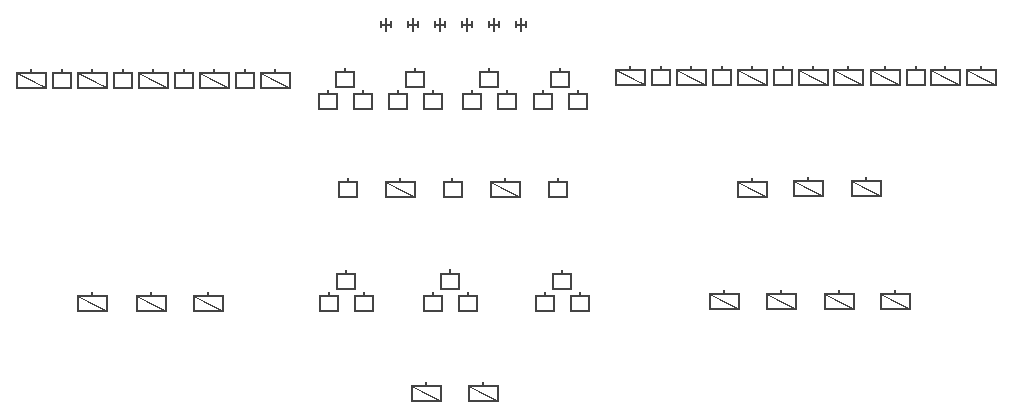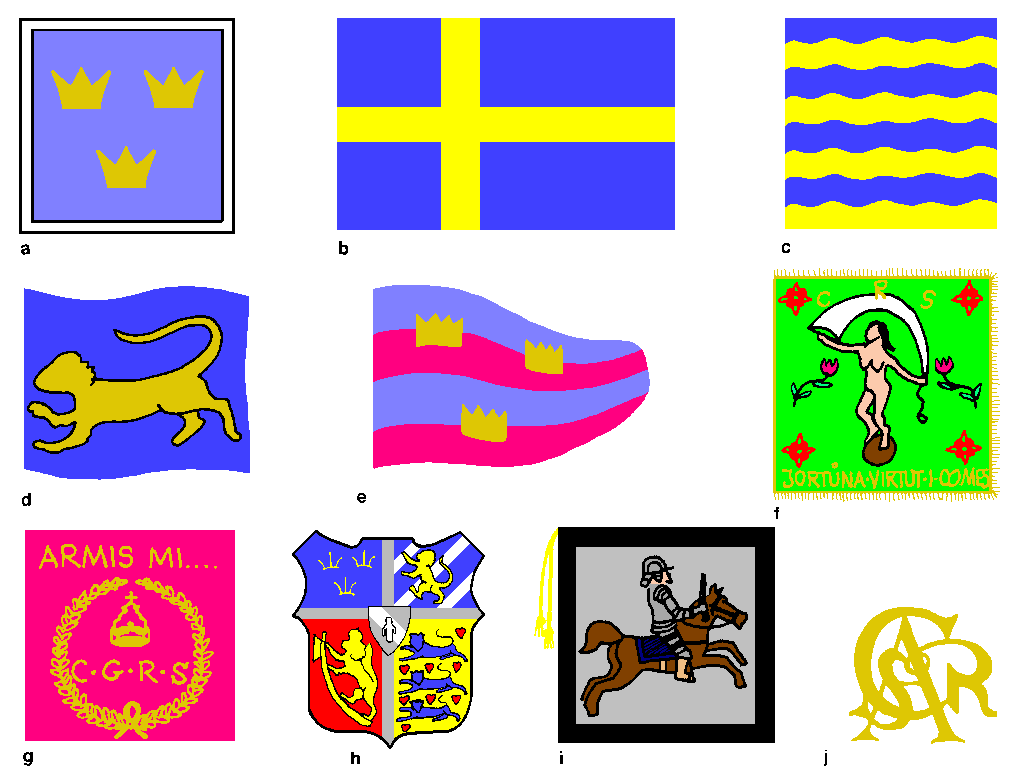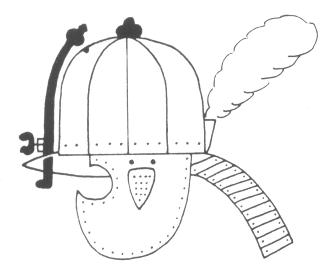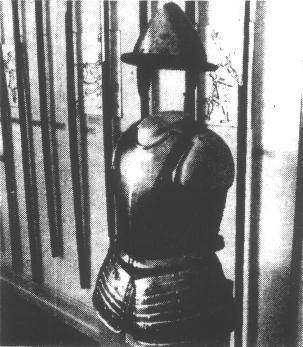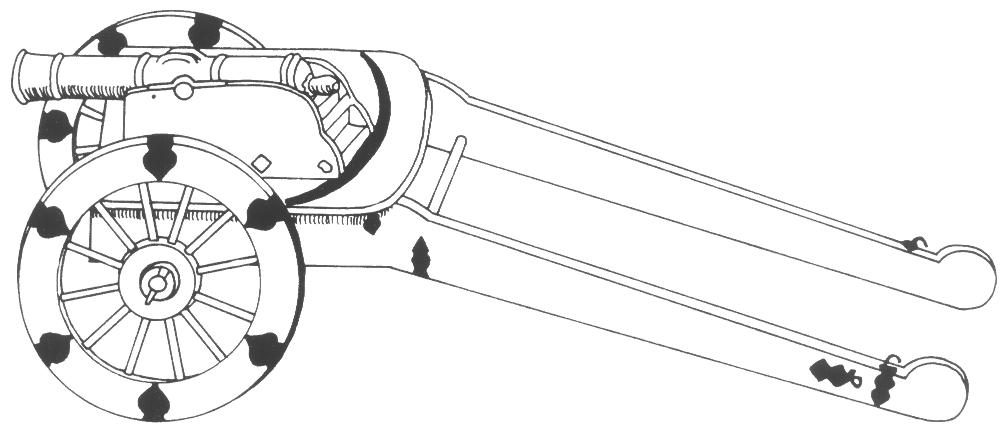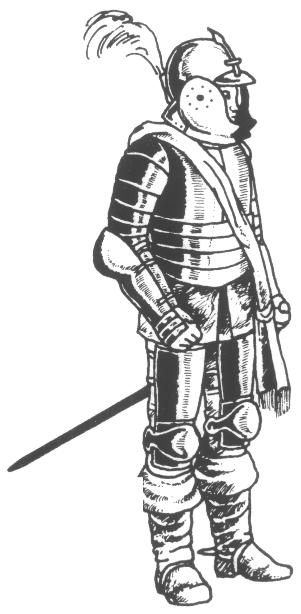
A Swedish cuirassier or Senior officer of the 30 Years' War.
Note unusual helmet type, popular with Swedes.
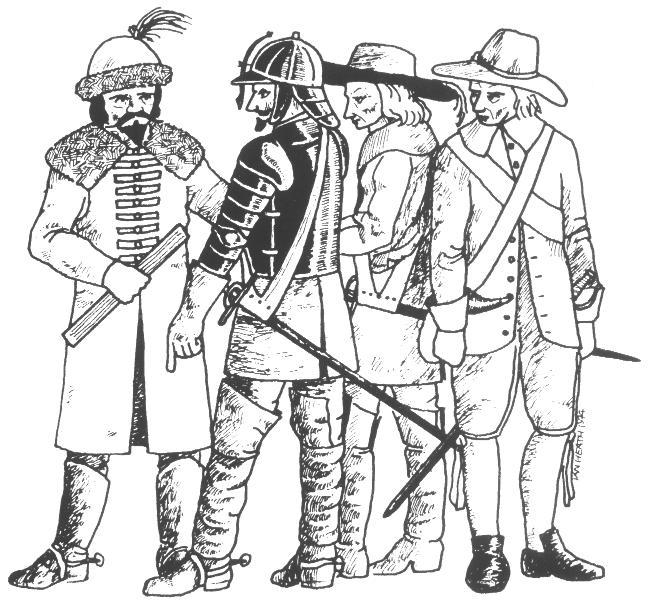
Left to right a Swedish general or marshal about 1650 in very Polish-style uniform. It appears that the fur-trimmed hat had remained in use since Erik XIV's day. Next to him is a cavalryman in 'pot' helmet, half armour and buff coat, 30 Years' War period. The officer behind him wears a grey felt hat and buff coat, with large lying-down white collar and white cuffs, plus a green scarf over his right shoulder. At far right is a Swedish musketeer of 1665, who is very similar in appearance to, for instance, French infantry of the same period.

